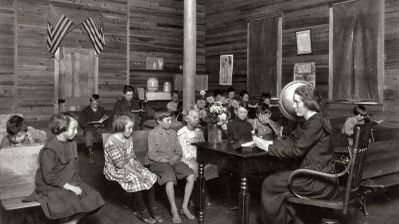The Classroom of the Future

Sal Khan is an accidental innovator. It’s an accident that generations of learners–young and old–stand to benefit from. Khan began his journey when he offered to tutor a younger cousin who had fallen behind in basic math, despite showing Khan signs of her strong reasoning skills. Khan’s remote tutoring via phone calls and web chats proved so successful that he began fielding similar requests from other family members and quickly reached the limits that this one-to-one approach would permit.
At the suggestion of a colleague, Khan began to record his mini-lectures on topics ranging from calculus to biology and posted them on YouTube. Even as Khan reclaimed time for himself and his own young family, his pupils grew dramatically in number, as students the world over discovered his offerings. Khan soon began to receive feedback from his cousins, and perfect strangers alike, that self-paced nature of learning through his short tutorial videos was a major advantage over the group-paced teaching students were receiving in their classrooms. In doing so, Khan stumbled on an insight that may ultimately be regarded as a practical revolution in our approach to teaching and learning.
Khan’s innovation challenged a long-standing premise of classroom learning — that all students had to learn at the same pace given the practical limits of tutoring each according tot their own individual progress. Regardless of whether any given student fully grasped a given concept, such as the sixth grade algebra that had challenged Khan’s young cousin, the class would move on to the next topic. Over time, gaps in a student’s education start to reveal themselves. Khan describes this as “Swiss cheese gaps” that keep building because of things students had missed previously. All of a sudden a good student starts failing calculus because they haven’t achieved mastery at earlier levels and, in so doing, their confidence erodes in ways that reinforce self-perceptions of inadequacy or even incompetency.
By removing the one-size-fits-all lecture from class and allowing teachers to invest more time on working with students in smaller groups geared toward their specific skill level, Khan is empowering a method of self-paced learning that is fundamentally different from this traditional model of education. In this clip, Sal Khan explains the insight that video tutorials have the power to flip old models of teaching on their head — now students can consume the ‘lectures’ as videos at their own pace, starting and stopping as necessary, and time with teachers in the classroom in more hands-on engagement more akin to homework or project-based assignments.
Watch the video below, right here:
—
Check out the Khan Academy and take courses on a wide variety of subjects, from biology modules, such as Introduction to Evolution and Natural Selection, to lessons on such far reaching topics as the economics of the Geithner Plan to solve the banking crisis, Derivatives, the Scale of the Galaxy, and the French Revolution.





